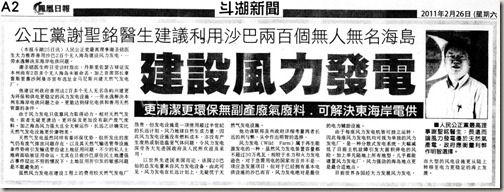From The Nation
By Imtiyaz Yusuf
In the post-colonial era, the Muslim world has faced the chronic problem of democracy deficiency. This is not due to a fundamental contradiction between Islam and the idea of democracy, but because of the denial of democracy by authoritarian Muslim regimes put in power either through their own strength or through being propped up by outsiders.
The worldwide Muslim population of 1.3 billion exists as majority and minority communities and is not monolithic. It is divided into the following cultural-linguistic zones: the Arab Middle East including the non-Arabic countries of Iran, Turkey and Afghanistan and the Kurds; the northern, western and eastern parts of Africa; the Central Asian republics of Kazakhstan, Turkmenistan, Uzbekistan, Kyrgyzstan and Tajikistan; the South Asian Muslim majority and minority countries of Pakistan, Bangladesh, India and Sri Lanka; the Southeast Asian Muslim majorities of Indonesia, Malaysia and Brunei, and the Muslim minorities of Thailand, the Philippines, Singapore and others; the Slavic Muslims of Bosnia-Herzegovina, Kosovo and Albania; and the Muslims of Europe and North America who are facing the challenges of integration and acceptance as Western secularism confronts Islam.
The largest international Muslim organisation is the Organisation of Islamic Conference (OIC) comprising 57 independent Muslim countries out of which only Turkey, Malaysia, Bangladesh, Indonesia, Pakistan and Iraq are democratic, and Iran a theocracy. Other types of political structures found in the Muslim world comprise monarchies – some of whom which are tribal in character – socialist regimes and military dictatorships.
The current demand for democracy rumbling in the Middle-Eastern part of the Muslim world started in the 1990s with the “reformasi” movement in Southeast Asia, which marked the end of the Suharto regime in Indonesia in 1998. The sacking of then deputy prime minster Anwar Ibrahim in Malaysia during the same year continues to affect Malaysian politics today.
The current democratic wind blowing through the Middle East is a returning wind from the 1990s when the electoral successes of the Islamist political parties the Middle East were blocked. For example: the Algerian military’s cancellation of the electoral victory of the Islamic Salvation Front (FIS) in Algeria in 1990; and Tunisia’s banning of the participation of the an-Nahdah, or Renaissance Party, led by Rachid Ghannochi, in the 1989 elections. Rachid Ghannochi has now returned to Tunisia after 22 years in exile.
In the 2000s, US President George Bush abandoned his promotion of democracy initiatives in the Middle East in the light of the electoral victories of Hamas in the Palestinian territories in 2006, and also the rise of the Muslim Brotherhood in Egypt and Hezbollah in Lebanon. The authoritarian Middle-Eastern rulers have always raised the fear of the “Islamist bogeyman” as the only other political alternative to themselves – thus the West has preferred the political company of the autocrats.
But the Middle East is changing. Muslim democrats came to power in Turkey through the electoral victory of the Justice and Development Party (AKP) in 2002 and subsequent elections, and also the emergence of the Green Movement in Iran in 2009. This has been followed by the current uprisings and transitions in Tunisia and Egypt.
While the previously cancelled poll victories in the Middle East were led by Islamic ideological parties or Islamists, the current wave of democracy in the Middle East – described by US Senator John McCain as a “dangerous virus” – is being led by a new and younger generation of Muslims.
Ideologically this new generation of protesters and activists are not Islamist, but Islam for them is an important reference point in life, thought and practice. They have not raised religious slogans, yet they also do not fit into the political imagination of Western liberals like Francis Fukuyama and others who have been awaiting the success of secular Muslims in Iran and elsewhere in the Muslim world.
When it comes to Islam and Muslim world politics it is perhaps foolish to expect a complete separation between religion and politics. The best option is to seek a balance between the two – something similar to the semi-secular character of Indonesia, Malaysia and Brunei in Southeast Asia.
The current political turmoil, revolt and the demand for democracy in the Muslim world is a native initiative; it is a protest born out of prevalent authoritarianism and political immorality. It is was just a matter of time before the opposition emerged. Furthermore, it is not being led by the dreaded “Islamist bogeymen” nor the jihadists.
There is talk that this demand for democracy may soon affect other Muslim countries in Asia and Africa. It is also probable that the current Muslim demand for democracy and equality will also play a role in the aspirations of Muslim minority communities in Southeast Asia, Europe and North America, as they seek cultural acceptance and integration in non-Muslim countries.
The whirlwind of democracy protests in the Middle East has a post-Islamist face marked by features such as Islamic capitalism, the prominence of an informed but unemployed youth, and the large number of middle-class poor as populations have become more urbanised over the last few decades.
Post-Islamism transcends Islamism as a political ideology. It mixes religiosity and rights; freedom of faith and liberty. It lays stress on individual choice and freedom; democracy and a Muslim version of modernity or alternative modernity; rights over duties; plural authority, hermeneutics over fixed scripture; and future instead of past. Post-Islamism indicates that the people have not rejected religion, they have rejected leadership.
This is Part 1 of a two-part series to be concluded tomorrow.
Imtiyaz Yusuf is professor of Islamics and religion at the Graduate School of Philosophy and Religion, Assumption University, Bangkok.






















Tiada ulasan:
Catat Ulasan